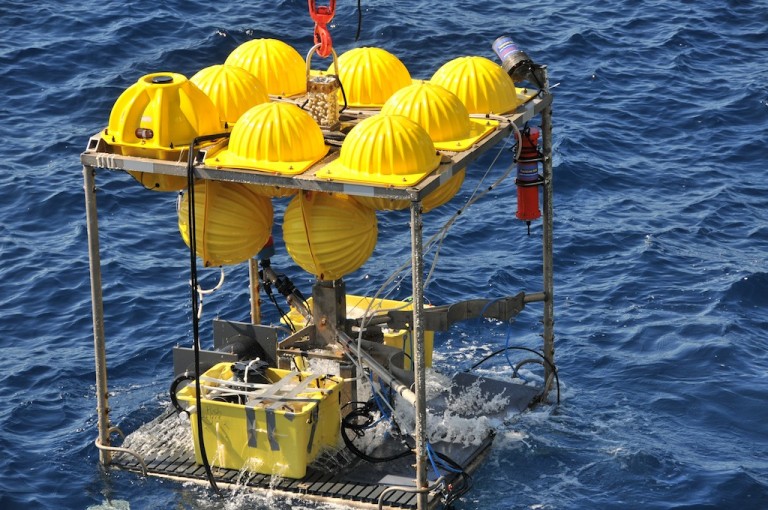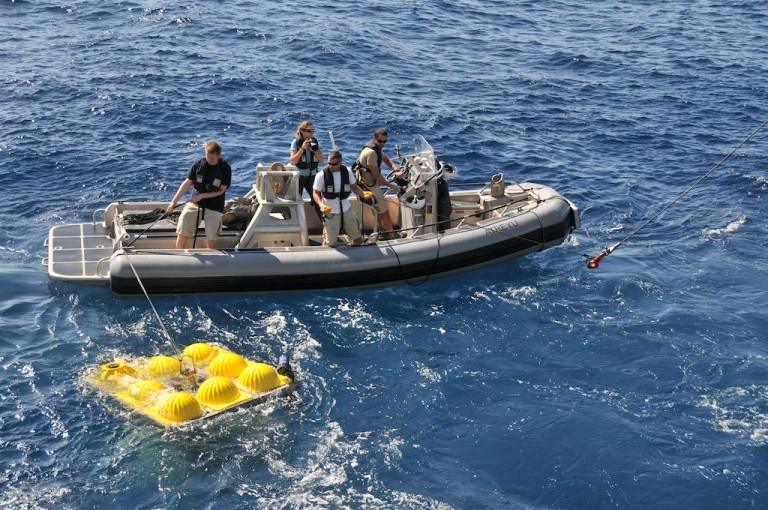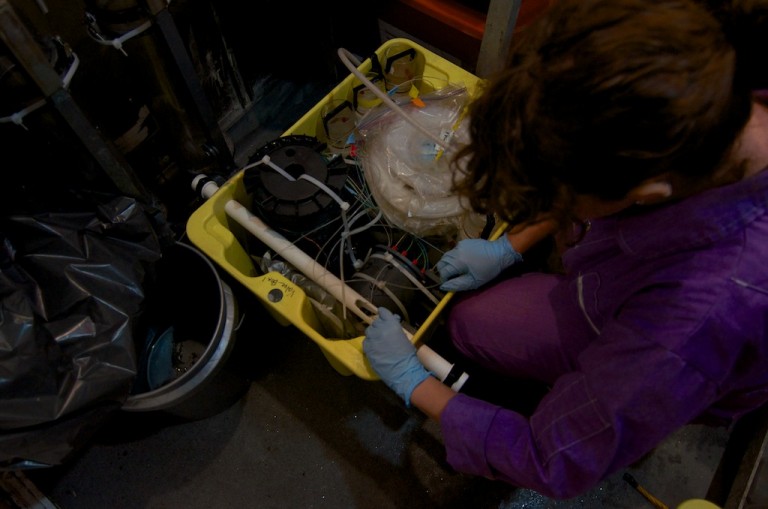Today was an incredibly successful day. Falkor the Luck Dragon—the ship’s namesake—seemed to be with us all along the way.

The first order of business was recovering the GC600 benthic lander. Originally the R/VPelican was scheduled to meet us here and conduct the recovery with R/V Falkor and ROV standing by. But when R/V Pelican operations were cancelled due to weather delays, the recovery plan was changed to only rely on R/V Falkor and ROV Global Explorer MK3. Beth Orcutt was continuously communicating with Laura Lapham and the lander engineers on shore for advice on how the ROV can be best used for this operation.
The ROV Global Explorer MK3 was deployed and flown down to the location of the lander on the seafloor. Using the manipulator arm, the ROV pilots grasped the lander’s backup mechanical release to drop the weights. It was a delicate operation with the possibility of ROV umbilical entanglement. ROV pilots slowly thrusted backwards with the manipulator arm still holding the release. When the lander was freed from the anchor and began to rise, the pilots quickly backed out of the way. The ROV stayed safely at depth while the lander ascended. The lander surfaced within 200 m from R/V Falkor about a half hour later.

The next part of the operation involved getting the lander up onto the ship. Spotters on the upper decks scanned the sea surface while the workboat was launched into the water. The workboat motored over to the lander and the crew grappled it. Initially they tried to tow it back to Falkor but the lander was too big and unwieldy. So the workboat stayed nearby the lander, keeping it under watch until the ROV was recovered and the ship could drive over. Once the ship was alongside, the workboat crew connected lines from the starboard crane to the lander. The crane hoisted the lander out of the water and placed it on the helicopter deck.
Everyone helped Beth get the experiments off the lander and disassemble the lander for transport. The samples were painstakingly removed, labeled, and stored in the cold van. There was a huge feeing of relief when everything was finally finished up just before dinner. The lander and its data were coming home.
Meanwhile, the ROV was put back into the water for another dive to collect push cores and water samples. Microbiologist Barbara MacGregor led this dive, targeting samples of the white microbial mats on the seafloor. The ROV also returned to the Video Time-Lapced Camera site and confirmed that the instrument was still working. At that active seep location, ROV manipulator was used to position a small net over the bubbling seafloor to collect fluid samples from the plume.

The good fortunes continued even as ROV dive ended and the vehicle was on its way to the surface. As the ROV flew upwards, the pilots observed that the highly sensitive sonar was capable of detecting the bubbles in the water column, allowing the plume to be tracked all the way up to the surface. Dr. Ian MacDonald was thrilled to have this new capability for his research.
The researchers will spend one more day to complete sample collection at this dynamic and interesting research site.
